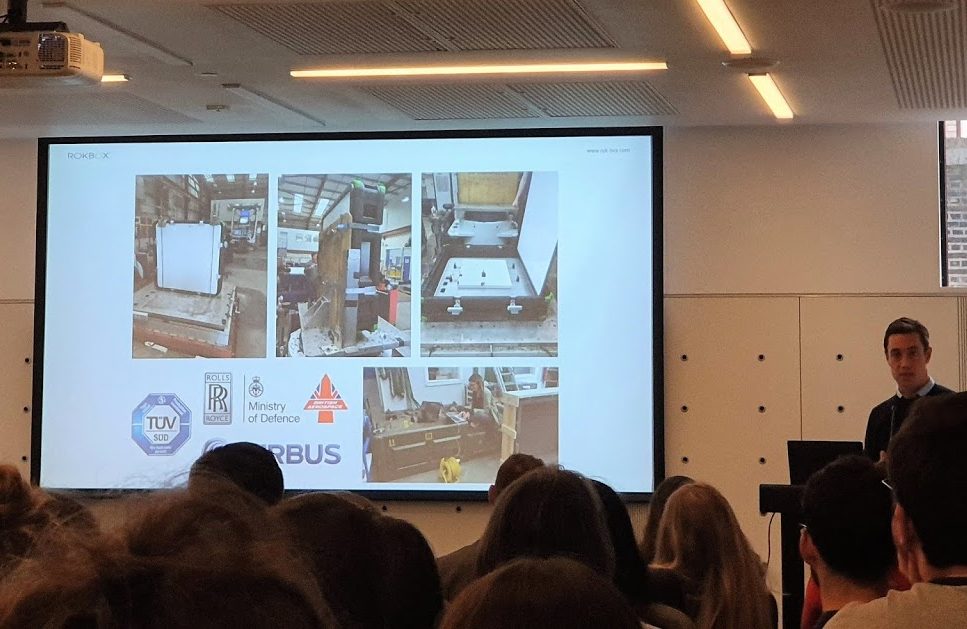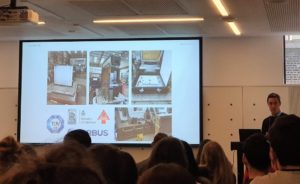
Building a Better Box
Andrew Stramentov, CEO and Founder of ROKBOX
Friday 7th February 2020 National Army Museum
 The traditional wooden packing crate is a source of a huge amount of waste in exhibition-making, with most cases being disposed of after use. ROKBOX has been developed as a reusable alternative for transporting two-dimensional artworks, and the company’s founder Andrew Stramentov talked us though its evolution.
The traditional wooden packing crate is a source of a huge amount of waste in exhibition-making, with most cases being disposed of after use. ROKBOX has been developed as a reusable alternative for transporting two-dimensional artworks, and the company’s founder Andrew Stramentov talked us though its evolution.As well as a desire to make art transport more environmentally sustainable, Andrew drew on his previous experience in the sector of when things go wrong with conventional crates – from a painting becoming loose and sustaining irrevocable damage due to the wrong screws being used, to water getting in through a crack during a rainstorm – to look for opportunities to improve them. He also pointed out, rather amusingly, that wood isn’t a go-to protective material in other areas; we don’t wear wooden helmets, lock our valuables in wooden safes, or strap children into wooden car seats. He obtained funding to found his business around five years ago, describing the environment for startups in the UK as supportive.
Andrew and his team began by collecting information to further inform the development of ROKBOX. They spoke to insurers to gather data on accidents involving standard crates, reviewed relevant literature, and consulted with museum and gallery professionals on why things sometimes go wrong, and what could be done better. Their findings were used to create a prototype, working with industrial designers Glenelg who brought an objective, non-art perspective to the project.
The new product was then tested to measure how well it performed against other crates in a specialist testing facility, and independently validated by an engineering academic from the University of Leicester. The case was subjected to dropping, vibrations, water immersion, forklift impact and temperature and relative humidity variations, amongst other things – an expensive and lengthy process. In terms of its environmentally friendly objectives, Andrew explained that, as well as being reusable, the lightweight design translates to a lower carbon footprint because of the reduced energy required to transport it.
Hearing about the journey to create ROKBOX was fascinating, and it’s encouraging to see people working on practical solutions to reduce the impact of art transportation on the environment, as well as potentially reducing risk to works. ROKBOX cases have been sold to a number of galleries and transport agents, and the product range is currently being expanded. It will be very interesting to follow how ROKBOX works in practice as it is rolled out, in terms of considerations such as cost, institutional and lender expectations, and flexibility.
Denise Courcoux, Assistant Exhibitions Registrar, Tate Liverpool

 Instagram
Instagram  LinkedIn
LinkedIn  Twitter
Twitter  My Account
My Account